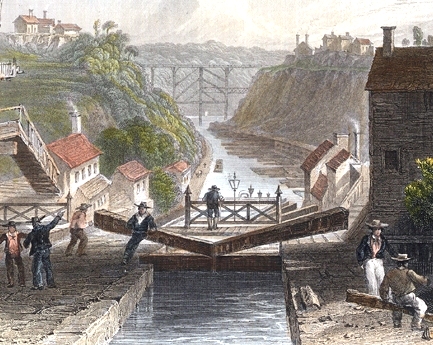
 Moody’s Investor Service has just lowered the New York State Thruway Authority’s senior lien revenue bond rating by a notch, from A2 to A1, citing the authority’s failure to identify a plan for raising tolls sufficiently to finance the building of the new Tappan Zee Bridge. Standard & Poor’s last month did much the same thing, for essentially the same reason.
Moody’s Investor Service has just lowered the New York State Thruway Authority’s senior lien revenue bond rating by a notch, from A2 to A1, citing the authority’s failure to identify a plan for raising tolls sufficiently to finance the building of the new Tappan Zee Bridge. Standard & Poor’s last month did much the same thing, for essentially the same reason.
The federal government recently approved a record $1.6 billion low-interest Transportation Infrastructure Finance and Innovation Act loan for the Tappan Zee project, repayable over a 35-year period starting five years after the bridge is completed. In the meantime, Moody’s notes, the Authority will significantly expand its borrowing to finance the new Tappan Zee link, also known as the “New New York Bridge,” or NNYB. Quoth the rating agency:
The downgrade considers that future financial performance will rely to a much greater extent on as yet undetermined toll increases to support the bridge construction costs and that failure to adopt sufficient rate increases within the expected time horizon would pressure financial metrics. Additional risks factored into the senior lien rating include the ability of [the Authority] to manage the construction of a complex project while maintaining the condition of its very large asset base; the contractor’s ability to deliver the NNYB project on schedule and within budget, particularly given the use of a unique floating crane that is being shipped from the West Coast.
Worry-warts. Cost overruns don’t occur too often on massive infrastructure projects, right? Oh,wait a minute.
Meanwhile, the Thruway Authority’s executive director announced today that tolls won’t rise for the next year, at least.
The continued toll suppression is not necessarily good news for New Yorkers who don’t drive much on the Thruway, however. In fact, the only reason Thruway tolls haven’t gone up already is that, apparently for the first time since Tom Dewey cut the final ribbon the thing 59 years ago, the authority’s operating costs are being subsidized out of the state budget’s general fund revenues — i.e., the taxes we all pay. This year, tax-funded state budget support for the Thruway comes to $85 million, including state police patrols permanently absorbed into the state budget.
The point of a toll road, remember, is to pay for itself. The only reason the Thruway Authority has been assigned a “stable” outlook by S&P and Moody’s is because it can raise tolls in the long run. Indeed, sooner or later, it must. But by how much? The Cuomo administration has remained very cagey on this front.
This much is certain: after leaching hundreds of millions of highway toll dollars into the state canal system over the past two decades while going more deeply into debt in a largely unsuccessful effort to keep pace with its rising capital costs (quite apart from the Tappan Zee Bridge), the once-solid Thruway Authority looks worse financially than its many rusty bridge overpasses.







